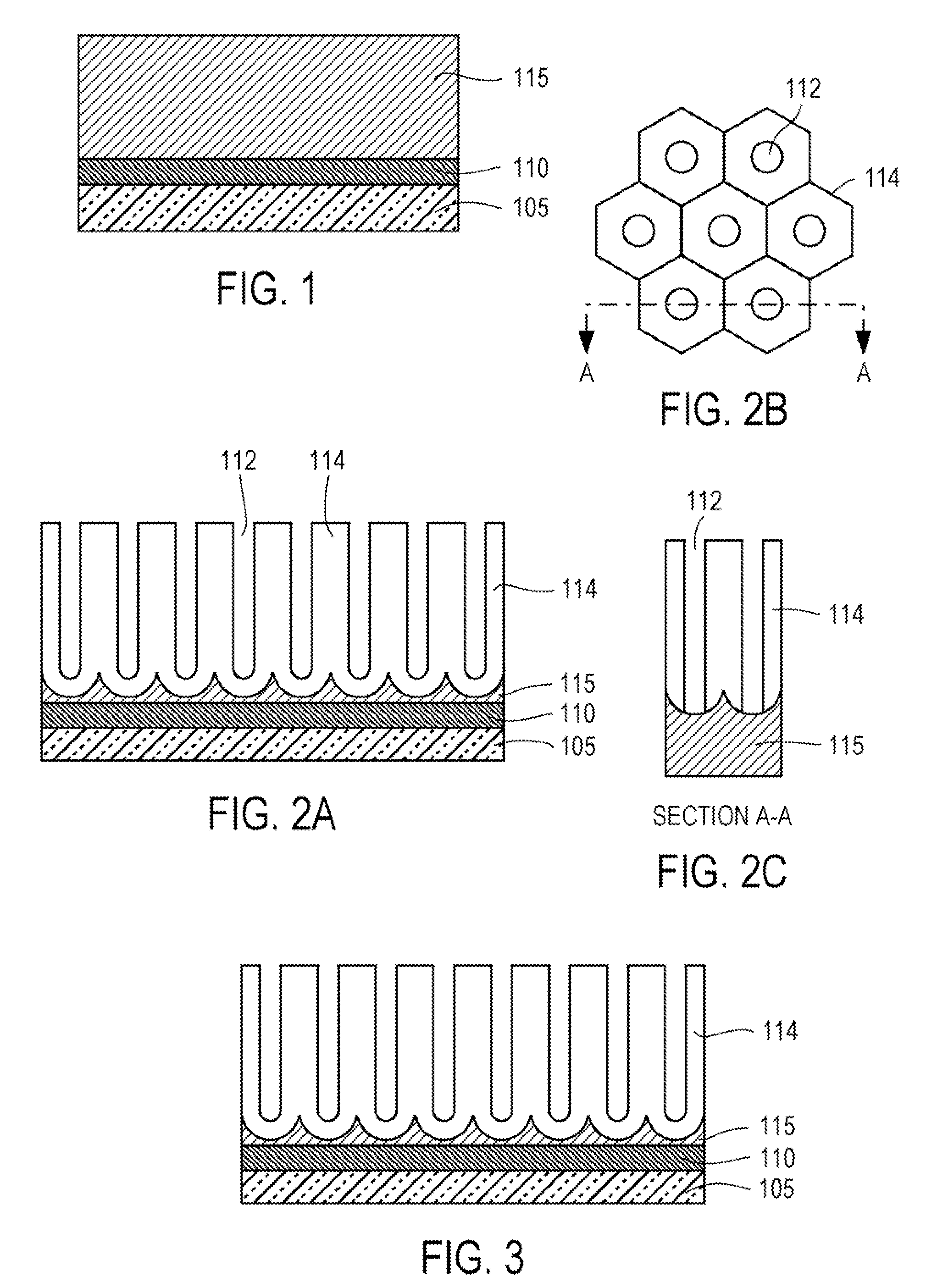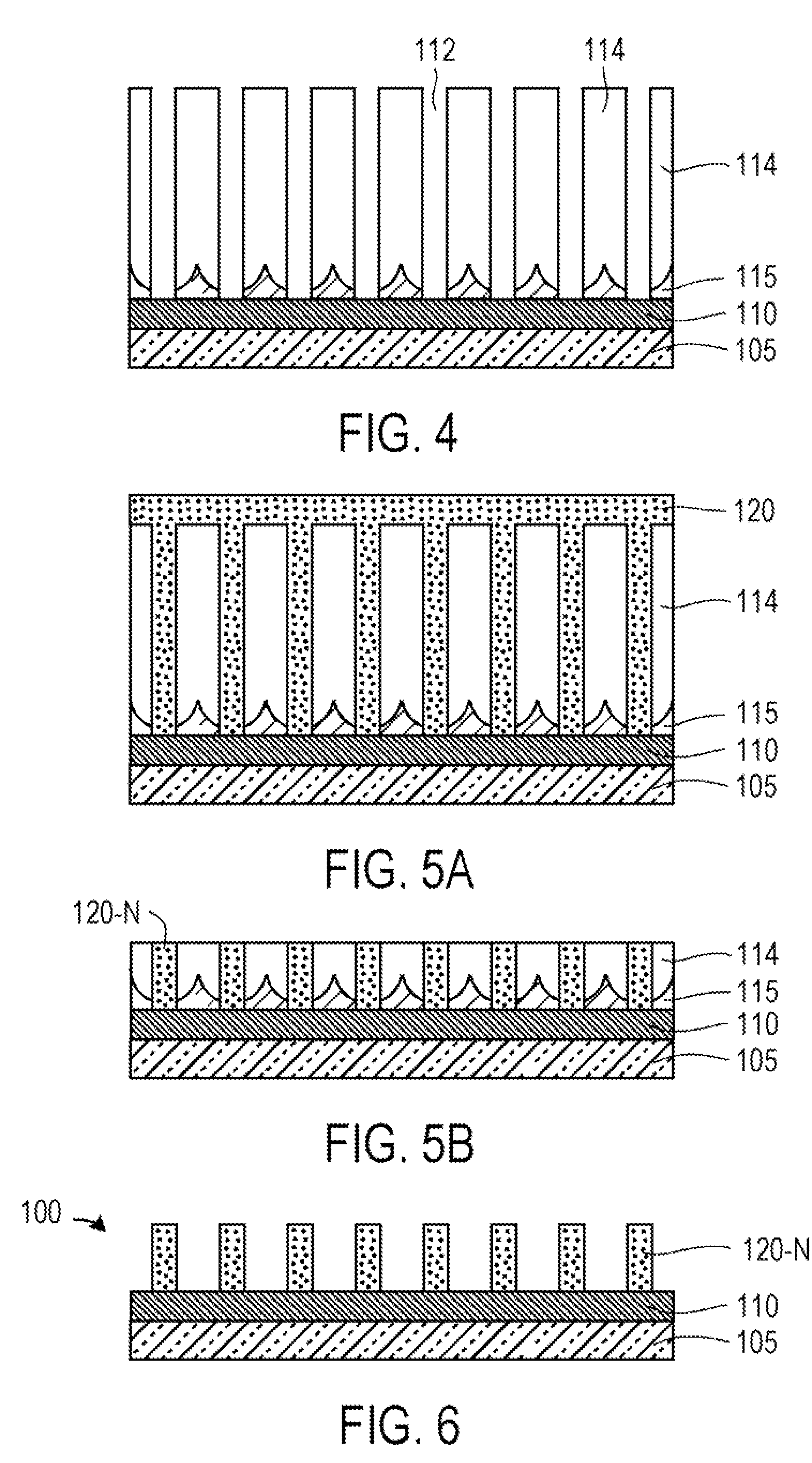Method of fabricating nano-structured surface and configuration of surface enhanced light scattering probe
a technology of enhanced light scattering and nano-structured surfaces, which is applied in the direction of spectrometry/spectrophotometry/monochromators, instruments, optical radiation measurement, etc., can solve the limitation of raman spectroscopy application, the weak raman scattering signal for trace chemical detection, and the difficulty of fabricating nano-structure surfaces with reduced nano-particle dimensions, etc., to achieve the effect of enhancing surface adsorption
- Summary
- Abstract
- Description
- Claims
- Application Information
AI Technical Summary
Benefits of technology
Problems solved by technology
Method used
Image
Examples
Embodiment Construction
[0027]Referring to FIGS. 1 to 6 for a series of processing steps to fabricate a nano-structured noble metal surface of this invention, FIG. 1 shows a two-layer structure with n-type silicon (100) flat wafer (3-8 Ω-cm) or oxidized (30-50 nm SiO2) p-type silicon (100) flat wafers (5-10 mΩ-cm), an electrically and thermally conductive layer 110 deposited on a silicon (100) substrate 105. The thickness of the conductive layer 110, such as Ti and Ni, is optimized to provide i) best adhesion to a subsequently deposited noble metal film, such as Ag, or Au film, etc., ii) electrical conductive film to apply electrical bias to sensing surface in field application, iii) thermal conductive layer to apply lower temperature of sensing surface. The thickness of this metal film is usually controlled in the range of 100 Å-1,000 Å. Then an aluminum layer 115 with purity of 99.999% and thickness in the range of 1.0-10.0 μm is deposited on top of the conductive layer 110. Prior to anodization, silicon...
PUM
| Property | Measurement | Unit |
|---|---|---|
| diameters | aaaaa | aaaaa |
| heights | aaaaa | aaaaa |
| depths | aaaaa | aaaaa |
Abstract
Description
Claims
Application Information
 Login to View More
Login to View More - R&D
- Intellectual Property
- Life Sciences
- Materials
- Tech Scout
- Unparalleled Data Quality
- Higher Quality Content
- 60% Fewer Hallucinations
Browse by: Latest US Patents, China's latest patents, Technical Efficacy Thesaurus, Application Domain, Technology Topic, Popular Technical Reports.
© 2025 PatSnap. All rights reserved.Legal|Privacy policy|Modern Slavery Act Transparency Statement|Sitemap|About US| Contact US: help@patsnap.com



